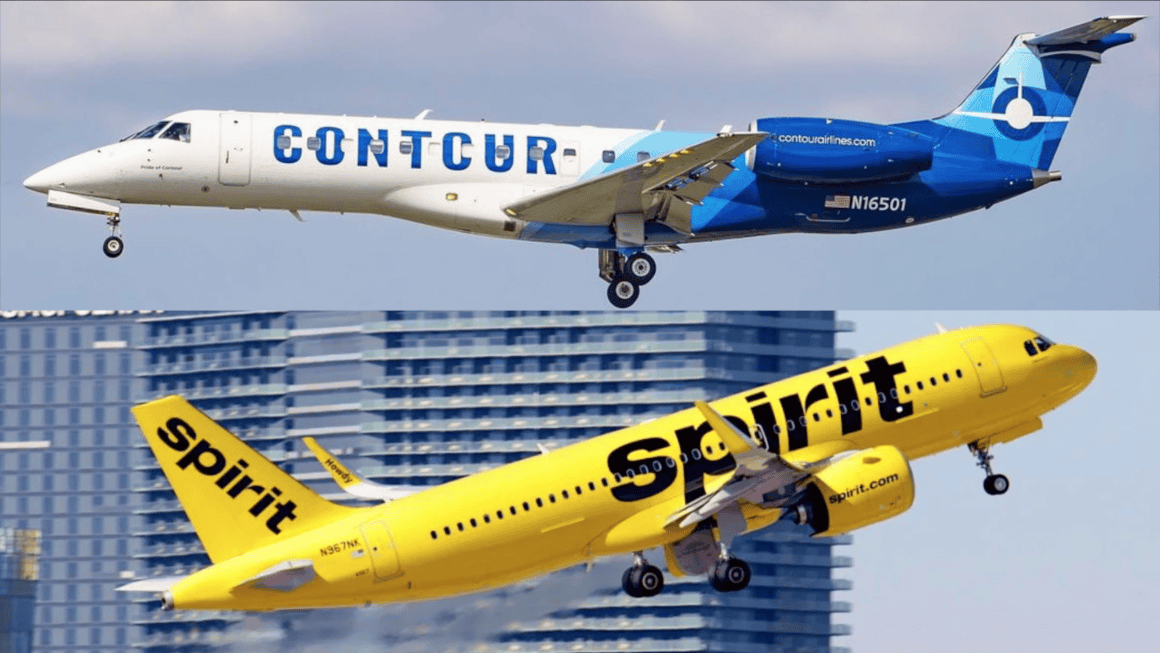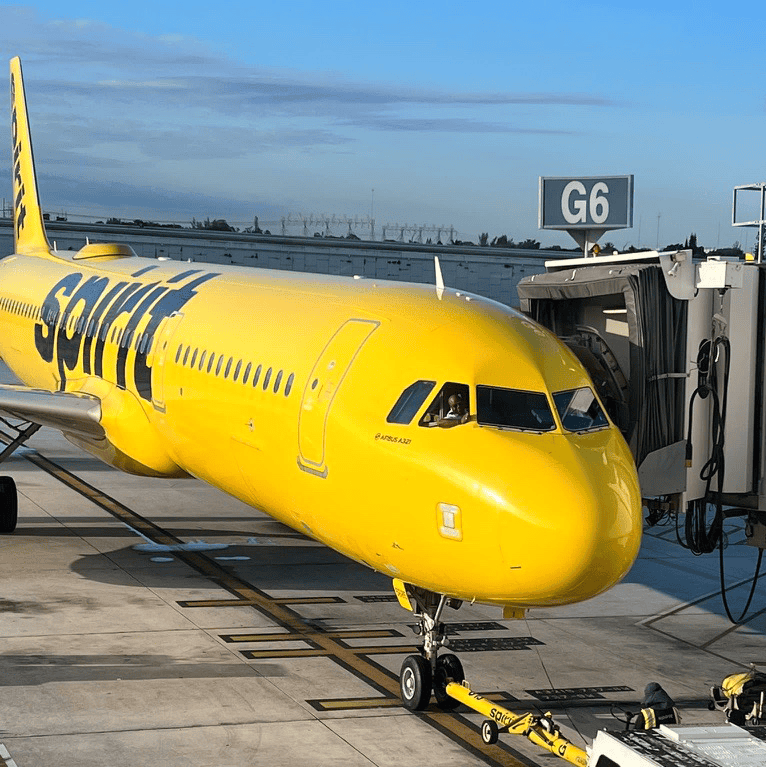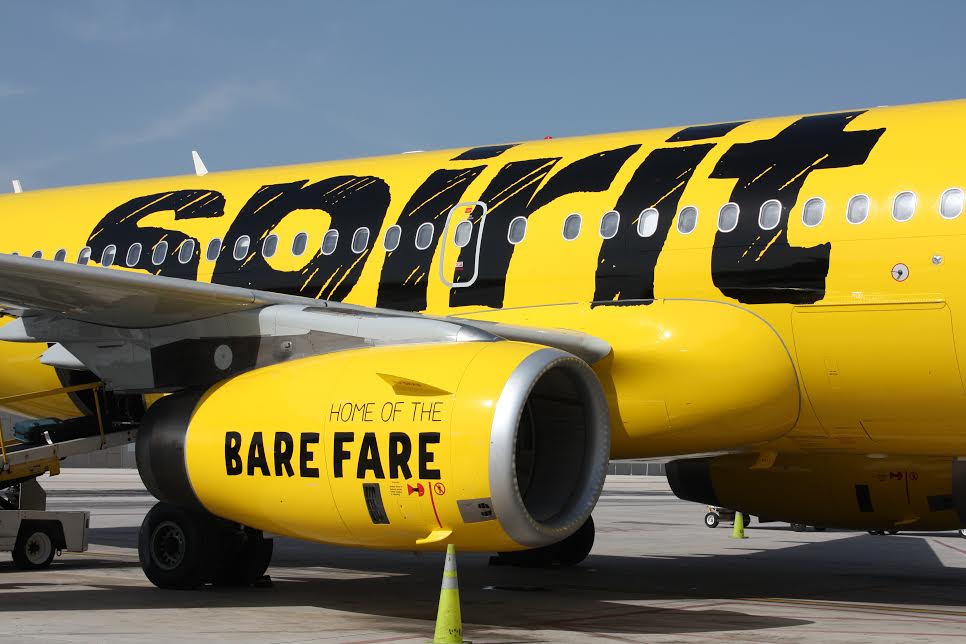Spirit Airlines will exit 11 US cities effective 2 October 2025, as part of its ongoing Chapter 11 restructuring.
The decision comes right on the heels of its second bankruptcy filing of 2025, initiated just last week. It also sheds light on the severity of the carrier’s financial challenges.
The cities losing Spirit service are:
- Albuquerque, NM | Albuquerque International Sunport (ABQ)
- Birmingham, AL | Birmingham-Shuttlesworth International Airport (BHM)
- Boise, ID | Boise Airport (BOI)
- Chattanooga, TN | Chattanooga Metropolitan Airport (CHA)
- Columbia, SC | Columbia Metropolitan Airport (CAE)
- Oakland, CA | Oakland International Airport (OAK)
- Sacramento, CA | Sacramento International Airport (SMF)
- San Jose, CA | Norman Y. Mineta San Jose International Airport (SJC)
- San Diego, CA | San Diego International Airport (SAN)
- Portland, OR | Portland International Airport (PDX)
- Salt Lake City, UT | Salt Lake City International Airport (SLC)

In addition, Spirit Airlines has canceled plans to launch service to Middle Georgia Regional Airport (MCN) in Macon, Georgia, which was scheduled to begin on 16 October in partnership with Contour Airlines.
It was only this past June when Spirit entered the Chattanooga and Columbia markets to much fanfare.
These markets make up just 3.9% of Spirit’s October seat capacity, but losing eight western US cities is a bold move for a carrier already on shaky ground (sounds like Avelo’s western retreat 2.0?)
Why Spirit Airlines Is Pulling Back

This marks Spirit’s second Chapter 11 bankruptcy filing in less than a year. Although the carrier had previously emerged from an earlier restructuring with reduced debt, it continues to face significant headwinds. These include more than $2 billion in liabilities, intensifying domestic competition, higher labor and fuel costs, and a leisure demand environment that has not fully recovered since the pandemic.
Chief Executive Officer Dave Davis framed the Chapter 11 filing as a strategic necessity.
“It has become clear that there is much more work to be done, and many more tools are available to best position Spirit for the future,” said Davis following the most recent bankruptcy announcement. “A court-supervised process is the best path forward to make the changes needed to ensure our long-term success.”
The filing also outlined plans for Spirit to focus on core markets.
Those core markets include large bases such as Fort Lauderdale, Orlando, Detroit, Las Vegas, and Atlantic City, as well as Spirit’s Latin America and Caribbean routes.
Spirit’s troubles go deeper than routes, though. The failed JetBlue merger in early 2024 left them with $3.1 billion in debt. In its latest quarter, operating costs ran at 118% of revenue.
They’re trying to spice things up with a “premium” low-cost model, offering “Go Comfy” seats and bundled fares, but it’s a tough sell when your stock’s down 94% since January 2025, and you’re facing NYSE delisting. Plus, they’re furloughing 270 pilots come 1 November and downgrading 140 captains to first officers.
That’s a lean operation, even for a ULCC.
Then there’s the operational mess: Pratt & Whitney engine issues have sidelined chunks of Spirit’s A320neo fleet. To top it off, AerCap, their aircraft lessor, yanked leases for 36 planes due in 2027-2028 and flagged defaults on 37 current jets—about 25% of Spirit’s 214-aircraft fleet.
According to planespotters.net, Spirit currently operates a fleet of 152 Airbus aircraft.
Competitive Fallout

Competitors are pouncing.
United is launching 15 new routes in January, targeting Spirit’s bread-and-butter like FLL, MCO, and LAS. Their SVP of network planning, Patrick Quayle, didn’t hold back, saying they’re simply prepping for if Spirit potentially “goes out of business.” Oof.
Duncan Dee, Spirit’s SVP of corporate communications, shot back at United, saying, “While we appreciate the obsession certain airline executives have with us, we’re focused on competing and running a great operation.”
While we appreciate the obsession certain airline executives have with us, we’re focused on competing and running a great operation.”
Duncan Dee | Senior Vice President of Corporate Communications, Spirit Airlines
He called United’s jab “wishful thinking” and doubled down on their low-fare mission, saying United’s goal was to “charge American travelers the highest fares possible to visit the people and places they love.”
It’s like an aviation soap opera, and we’re here for it.
United will launch 15 new routes in January, including new service from Newark to Chattanooga and Columbia, expanded Houston service to six US cities, and additional flights from Chicago (ORD), Newark (EWR), and Los Angeles (LAX) into Spirit strongholds such as Orlando (MCO), Fort Lauderdale (FLL), and Las Vegas (LAS).
Frontier isn’t sitting idle, either. It’s rolling out 42 new routes (20 were announced on 26 August, and 22 additional were announced on 4 September), many of which overlap with Spirit’s turf.
What It Means for Travelers

The immediate impact for passengers is reduced access to low-fare options in the affected cities. Spirit Airlines has long been a price leader, especially in leisure markets, exerting downward pressure on fares across the board. With Spirit’s departure, there is potential for higher ticket prices, particularly in smaller and mid-sized markets like Chattanooga, Columbia, and Boise, where ULCC competition is already limited.
Under US Department of Transportation rules, travelers booked on Spirit flights after 2 October will be eligible for refunds. The airline has committed to notifying customers directly and assisting with rebooking or reimbursement.
A ULCC Model Under Pressure

Spirit’s retrenchment highlights the challenges ULCCs face in today’s US market. The traditional model, which was built on high aircraft utilization, dense seating, and a la carte pricing, has come under strain from rising operating costs and shifting passenger expectations. Travelers increasingly demand reliability, schedule flexibility, and more comfort, putting pressure on carriers that rely on the bare-bones approach.
Moreover, consolidation across the industry has made it harder for small- to mid-sized ULCCs to compete against larger network carriers with greater financial resilience. Spirit’s failed merger attempts with Frontier and JetBlue are a giant stain on the strategic uncertainty plaguing the Dania Beach, Florida-based airline.
Spirit Airlines Has “Every Expectation” That it Will Be in Operation for “Many Years to Come”

Spirit insists it remains committed to operating as a stand-alone ULCC.
Duncan Dee says Spirit has no intention of going anywhere.
“Spirit is responsible for making low fares available to consumers for more than 30 years,” he said. “We have every expectation to continue doing so for many years to come.”
Still, its future remains highly uncertain. Industry analysts note that Spirit has not achieved a full-year profit since 2019, and with competitive pressures mounting, the road to recovery will be steep. Some suggest that another merger attempt may be inevitable, while others believe Spirit may need further cuts to achieve stability.
The decision to withdraw from 11 cities—including major West Coast markets such as San Diego, San Jose, and Portland, alongside smaller stations like Chattanooga and Columbia—marks a turning point for Spirit Airlines. Once known for rapid expansion and aggressive fare competition, the airline is now in survival mode, shrinking to preserve resources and protect its strongest hubs.
Whether this leaner network can restore profitability remains to be seen. What is certain is that Spirit’s retrenchment will reshape the ULCC landscape, reducing competition and leaving travelers with fewer low-cost options. And that’s not good for anybody.”
